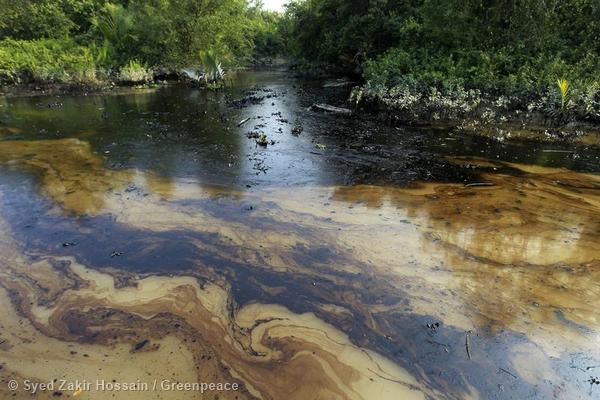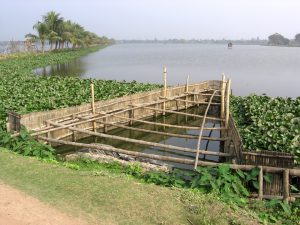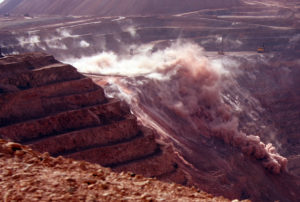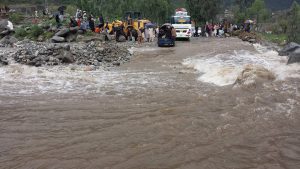The recent capsizing of a coal carrying ship in the Sundarbans has raised the stakes on the assessment being carried out by UNESCO on the Rampal power plant. Located on the fringes of the Sundarbans, the world’s largest mangrove forest, the power plant may add to the troubles of this UNESCO World Heritage site. So far, despite the sustained criticism of environmentalists, the Bangladesh government continues to back the construction of the 1,320 megawatt coal fired power plant in Rampal.
The Bangladesh India Friendship Power Company Ltd (BIFPCL), a joint initiative of India’s National Thermal Power Company and Bangladesh’s Power Development Board signed an agreement to build the power plant with BHEL (Bharat Heavy Electricals Limited) on 29 February 2016. Though the project was originally expected to be awarded by early 2014 and completed by 2017, the process was delayed as the company could not manage to secure donors in the face of environmental concerns. The state-owned Government Pension Fund Global of Norway was scheduled to invest BDT 4,300 million (USD 55 million) for the project, but they withdrew the fund as Norway’s Council on Ethics recommended dropping the project due to the threat to the Sundarbans.
Read: Capsized ships endanger Sundarbans ecology
Read: South Asia’s abused wetlands surviving – just about
Read: Only 100 Bengal tigers left in Bangladesh Sundarbans
Frustrated, Bangladesh had also reportedly approached the Chinese government, but with Indian funding coming through, the plant is now set to be completed by 2019. There were three bids for the USD 1.5 billion job. According to the conditions of the tender, the construction company BHEL would arrange 70% of the financing from the Indian Exim Bank on behalf of BIFPCL, who will fund the additional 30% of the project cost.
Continuing environmental concerns
The government has defended the plans for the plant, saying its emissions would not cause any harm to the Sundarbans. Bangladesh faces enormous pressure to generate electricity. According to World Bank data only about 60% of Bangladesh’s population has access to electricity. Environmentalists are unconvinced. A 101-member National Committee to Protect Sundarbans has demanded the suspension of all activities on the Rampal plant, as well as the Orion power plant located close by, until a fresh environment impact assessment (EIA) has been conducted by a UN-led team.

The committee had sent a letter to the UNESCO headquarters earlier this month requesting them to recognise the site on the list of its World Heritage in danger. The convener of the committee, Sultana Kamal, a former adviser to the caretaker government said, “The Sundarbans is our national resource and it is already facing many threats.” She said that the area of the Sundarbans has shrunk from 17,000 square kilometres in 1911 to only 10,000 square kilometres today.
Dr Abdul Matin, the general secretary of Bangladesh Poribesh Andolon (BAPA), the umbrella organisation for country’s environment movement, told thethirdpole.net, “The power plant may be relocated somewhere else. But we do not have an alternative for the Sundarbans.”
However, Uzzal Chakraborty, managing director of BIFPCL said that the demand of the environmentalists was “not logical”. They had followed local laws, and as regards safety measures, they have followed the World Bank’s stringent guidelines.
Visit of UNESCO Team
Due to complete happenstance, the environmentalists will get their wish. A high-profile UNESCO delegation visited the Sundarbans in March to assess the possible impacts of the proposed coal-based Rampal power plant on the world’s largest mangrove forest. They had been originally expected to come in February, but had been asked to come a month later by the Bangladeshi government, according to chief conservator of forests, Yunus Ali.
The trip was originally scheduled to evaluate the impact of the oil spill that occurred on 9 December 2014 in the Shela River in the Sundarbans when an oil tanker carrying about 350,000 litres of furnace oil overturned in the river after colliding with a cargo vessel. But just before the UNESCO team was due to visit, another disaster took place, as a coal laden ship capsized on 20 March 2016. UNESCO has now conducted a much more detailed assessment of the Rampal plant and its impact on the Sundarbans.
The report, whose release date is yet unclear, will have a far-reaching impact on environmental concerns, electricity generation and the future of the Sundarbans. Both the Bangladeshi government and the environmentalists will be waiting for its results with great anticipation.








